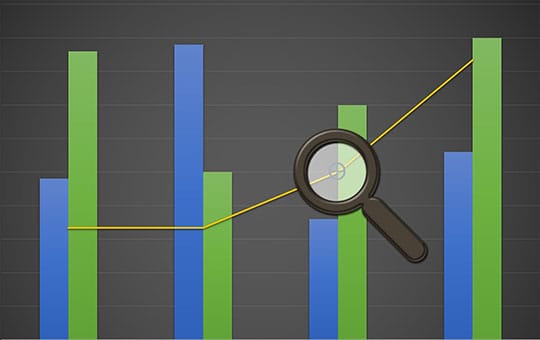If you’re a tech company looking for a relatively easy way to give your visitors more detailed information and increase your onsite conversion ratio, there are few better tools than a product comparison chart. The idea is to compare multiple products within a category, side-by-side, indicating differences in features and pricing in one convenient area—and if you use it correctly, it could become one of your site’s most valuable assets.
If you’re just getting started on optimizing your website for audience interactions, we recommend you first read about how to make your website more interactive for visitors.
Why Comparison Charts Are So Valuable for Companies

Why are comparison charts so valuable in the first place?
- Digestible information: Comparison charts give users lots of detailed information but in a single, digestible package. Users can highlight the variables that are most important to them (such as price or durability), and make a decision that way, or zoom out and try to interpret the high-level takeaways. This is especially important for high-tech products, which consumers may not fully understand.
- Apples-to-apples comparisons: Comparison charts also allow consumers to compare products apples-to-apples. Rather than deciphering each company’s marketing copy and trying to form an intelligent conclusion, customers can see how each product stacks up to the others in specific categories. This is important for all types of analytic decision-making, including judging whether the stock market is in a correction based on its past performance; otherwise, there’s no foundation on which you can build an effective comparison.
- Audience targeting: Product comparison charts are custom-made for people nearly ready to make a purchasing decision. For audience targeting purposes, this makes them ideal for securing new conversions. These are customers who know they want to buy something but need a little more information to push them over the edge.
- Calls-to-action (CTAs): These charts also offer the opportunity to build in a call-to-action (CTA) for each product or one product that stands out from the others.
- Shareability: As long as you make the chart interactive and include links for social sharing, your comparison chart can be a highly shareable piece of content, making it more visible than a simple blog post.
Recommended for you: 3 Ways to Scale Enterprise Content Marketing in 2018.
How to Make the Most of Them

If you’re interested in creating a comparison chart that features your tech product, these are the strategies that can help you get the most value out of them:
- Offer multiple types of content: If you want to appeal to the most people and give a more detailed account of your most important tech, include different types of content in your chart, including writing, graphics, photos, and video; after all, four times as many customers prefer to watch a video rather than read about it. If you have trouble fitting everything into the format of your chart, include links or supplementary blog posts that give users the content they’re looking for.
- Include many variables: Though you should keep your comparison chart concise, you should also include multiple variables (such as price, style, and storage size)—as many as your design will allow. Customers may favor categories differently based on their current needs, so make sure to include a filtering or sorting option based on those variables.
- Keep things unbiased: Though you’ll be tempted to weight your comparison chart in favor of whichever tech product you’re promoting, try to keep things as unbiased as possible. If it’s clear that you’re promoting only one product in the mix, visitors will instantly discredit the value of your work, and move on to a more unbiased source. Don’t be afraid to show off some of your competitors’ strengths and highlight some of your own product’s weaknesses; it’s only going to increase the trustworthiness of your piece.
- Provide recommendations and reviews: You can’t increase conversions if there’s no incentive to convert. Somewhere on your chart, you’ll need to make a final recommendation or several final recommendations for your products. For example, you might have an “editor’s choice” emblem for the product you think is the best overall or denote specific products that excel in each area. You may also flesh out your comparison chart with more detailed written reviews of the individual products contained within.
- Syndicate: A comparison chart won’t generate much visibility on its own; you need to support it by syndicating it on social media and circulating it among any personal branding or other publication channels you have to offer. If it starts getting socially shared and starts earning links, it will generate far more traffic than if left alone.
You may also like: Content Marketing Trends 2018 – Be Prepared for these 7 Trends.
Final Words

Before you start working on your tech brand’s comparison chart, run a quick search to see if any of your competitors have beaten you to the punch. If there’s already a chart for your chosen niche, you’ll need to take careful steps to differentiate yours—and hopefully, offer something better. Once published, revisit your chart occasionally to update it with new information, and collect feedback from users that can help you improve. This is an ongoing investment; the more you put into it, the more you’ll get out of it.
If you’re still in need of help increasing your conversion rate or improving your reputation with web visitors, make sure to check out our web design section—it has all the content you need to improve your web design skills and drive those conversion rates up.





